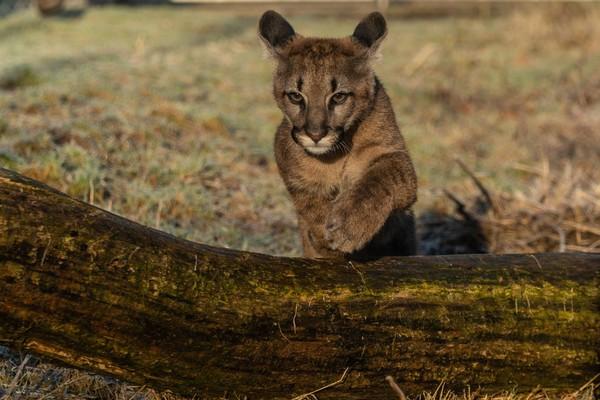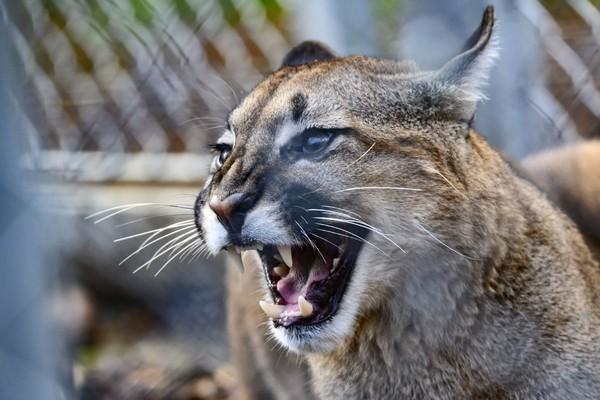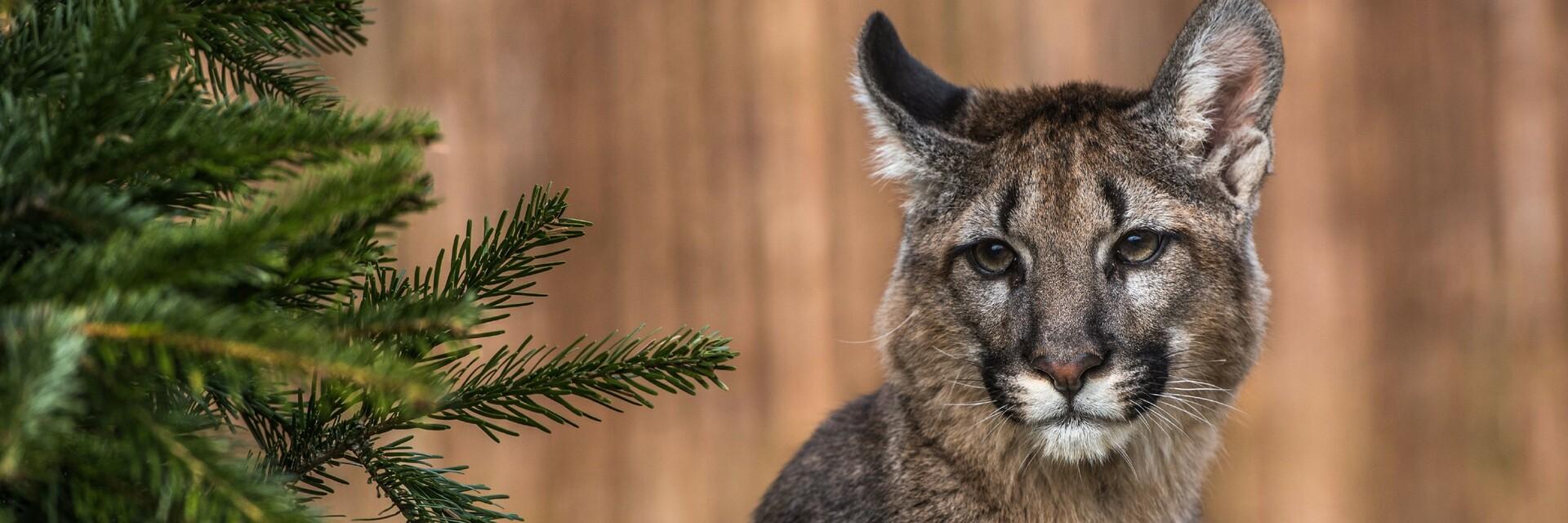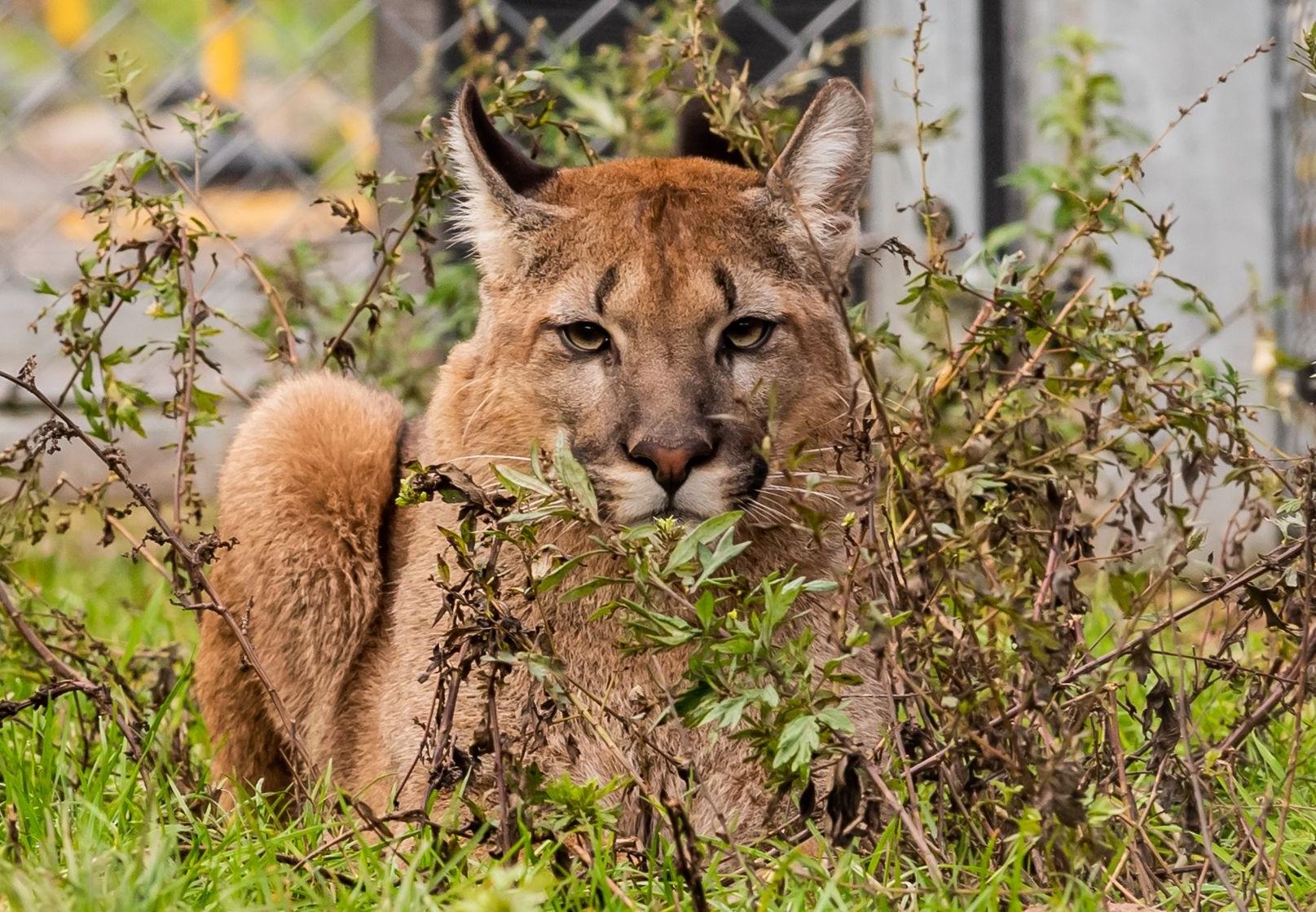
About Pumas – Also Called "Puma Concolor"
The small cat is extraordinarily agile and strong
The puma is also called silver lion, mountain lion or cougar in some areas. Depending on the subspecies, it reaches a shoulder height of 60-85 cm and a head-torso length between 105 and 195 cm (males) or 95 to 151 cm (females). The tail length is additionally 60-97 cm. In the distribution areas of North America, a male cougar can reach a weight of up to 125 kg. Smaller subspecies in Central and South America, however, weigh only 50-70 kg. Females usually weigh between 35 and 50 kg.
The short, smooth fur is creamy brown to reddish brown or silver-gray in color. The chin, chest and ventral side are always white, and the tip of the tail is black. The cubs are born with a distinct spotted pattern. However, this fades within the first year of life.
The puma is exceptionally agile and strong. To jump up to 5.5 m in height is no problem for an adult animal.
Pumas are unable to roar, but communicate with each other using a series of sounds. This is especially important during mating season or for communication between mothers and their offspring.
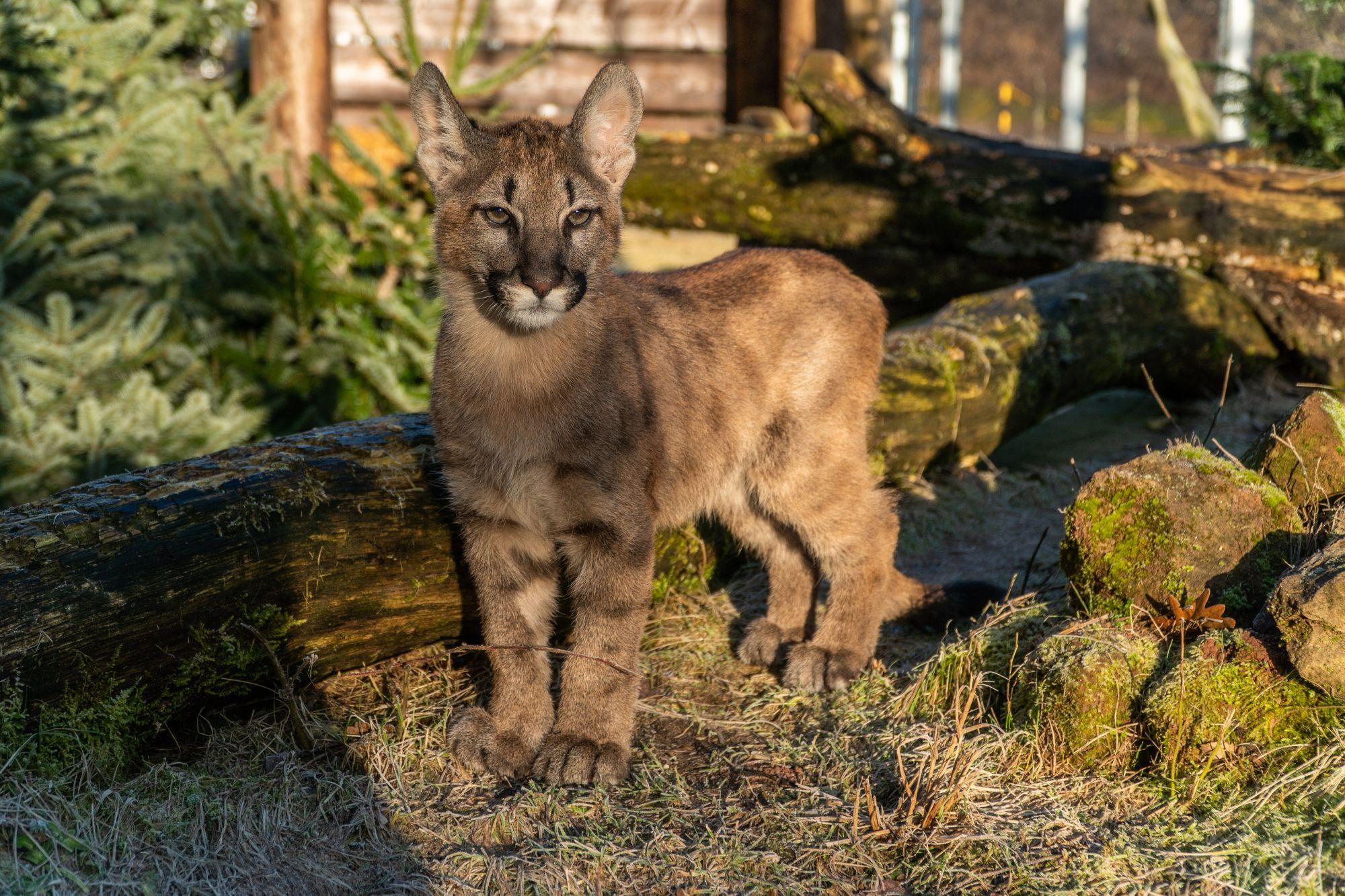
Young pumas have spotted fur
Scientific classification
| Order | Carnivora |
| Suborder | Feliformia |
| Family | Felidae |
| Subfamily | Felinae |
| Genus | Puma |
| Species | Puma concolor |
| Binominal name | Puma concolor (Linnaeus, 1771) |
The puma, just like the tiger, belongs to the cat family. Unlike the latter, however, the puma is not classified among the big cats. Rather, it is the largest species within the subfamily of small cats, which includes serval, ocelot, wild cat, domestic cat and lynx. After tiger, lion and jaguar, the puma is the fourth largest predatory cat species in the world. Read more about tigers here.
Did you know...?
What is the lifestyle of a puma?
The puma is a strict loner, which avoids conspecifics outside the mating season. Males mark their territories by means of droppings, urine and scratch marks on trees. Their territories range from 50 to 1,000 km², depending on the availability of prey and potential mates. The territories of the males usually overlap with those of several females.
The size of the prey of a puma is very variable and ranges from mouse to moose size. In North America, prey includes reindeer, young bears, coyotes and even moose, but rats, mice, insects, raccoons and beavers are also on its menu, sometimes birds and fish. The most common prey animal in all distribution areas is the deer. Even in South America, various deer species make up the bulk of its diet. In tropical ranges, the larger jaguar is a competitor for the puma for large prey. This leads to the puma also hunting various mammals of medium size, such as guanacos, vicuñas, armadillos and agoutis. In the vicinity of settlements, pumas also frequently take domestic and farm animals, such as goats, calves, sheep, and poultry.
Pumas are not hunters who rush after their prey. They tend to avoid running long distances. Although they can easily reach speeds between 55 and 72 km/h, they rarely use this ability. When hunting, the puma sneaks up as close as possible to its prey, then jumps on its back from a short distance and breaks its neck with a bite. If the prey is missed, the puma usually does not chase after it.
During the mating season, which is usually between November and June, males and females stay together for a maximum of 6 days. After a gestation period of about 3 months, the female usually gives birth to two to four cubs. These have a birth weight of about 250-500 g. At the age of about 6 weeks the young start to eat solid food. At about 1.5-2 years, the young pumas become sexually mature and look for their own territories.

Where do pumas live and how many are left in the wild?
The species is divided into six subspecies, which are distributed in North, Central and South America. The smallest representatives live in the region near the equator while the larger subspecies are found in the extreme north (Western Canada) and south (Patagonia) of the continent. While the range of the puma once extended across the entire American continent, this has become increasingly patchy over the past 100 years as settlement has increased. The species has disappeared from eastern America in particular.
Although the puma is protected as a species, it is hunted in many places – including by farmers who fear losses within their livestock. The total population is estimated at less than 50,000 adults. Population numbers are declining, yet the species is not yet classified as endangered on the IUCN Red List of Threatened Species.
What threats does the puma face?
Except for wolves, bears and jaguars, which occasionally prey on young or sick animals, the puma has no natural enemies. As is often the case, it is humans who pose the greatest threat to its species and whom it has no defense against.
The puma is naturally shy and avoids human proximity. However, the habitat in which the puma can lead a life far away from settlements is shrinking more and more. Conflict situations between humans and animals are therefore pre-programmed and usually end to the disadvantage of the small cat. Attacks on humans are very rare and even rarer end fatally. However, it often happens that domestic or farm animals become easy prey of the skillful hunter. And in the end he himself finally becomes the hunted because of this.
Already in the past, the hunting of the puma by the white colonists in North America almost led to the extinction of its species. Besides the effort to protect their cattle from him, the puma was also a popular trophy.
